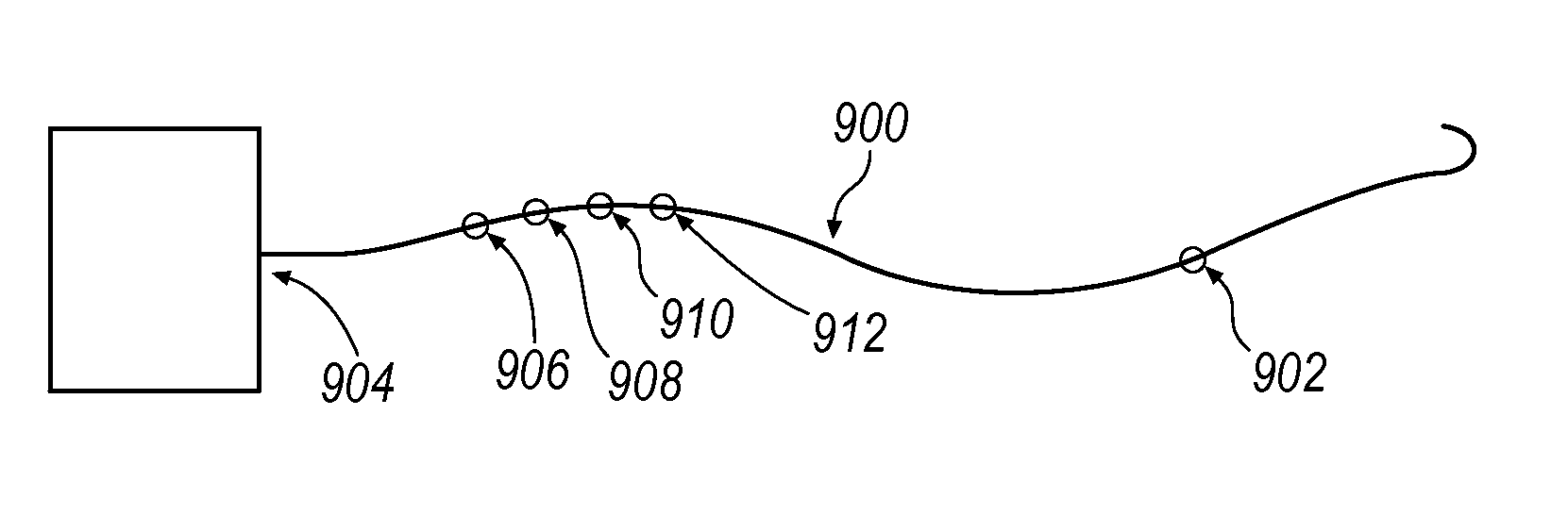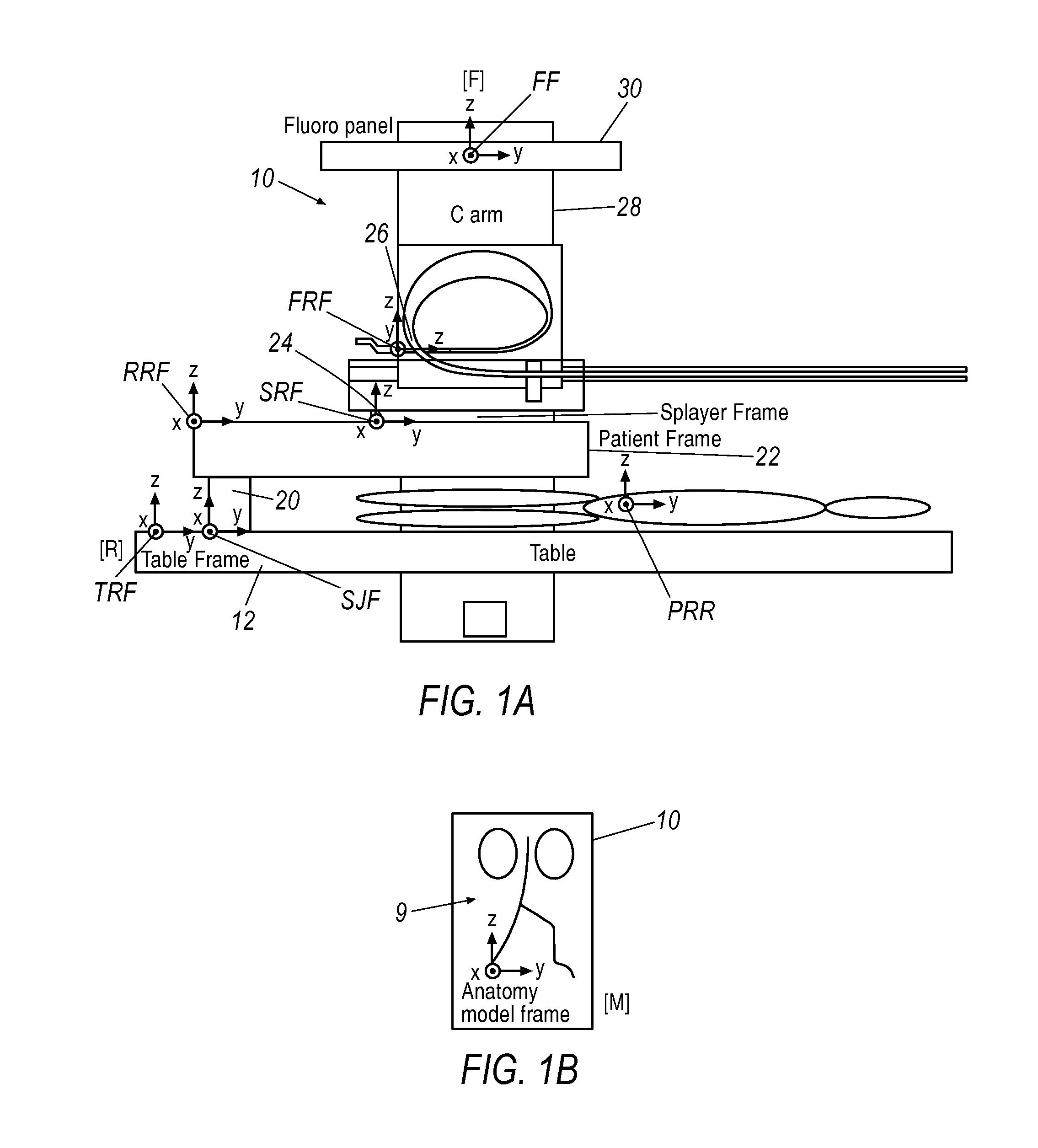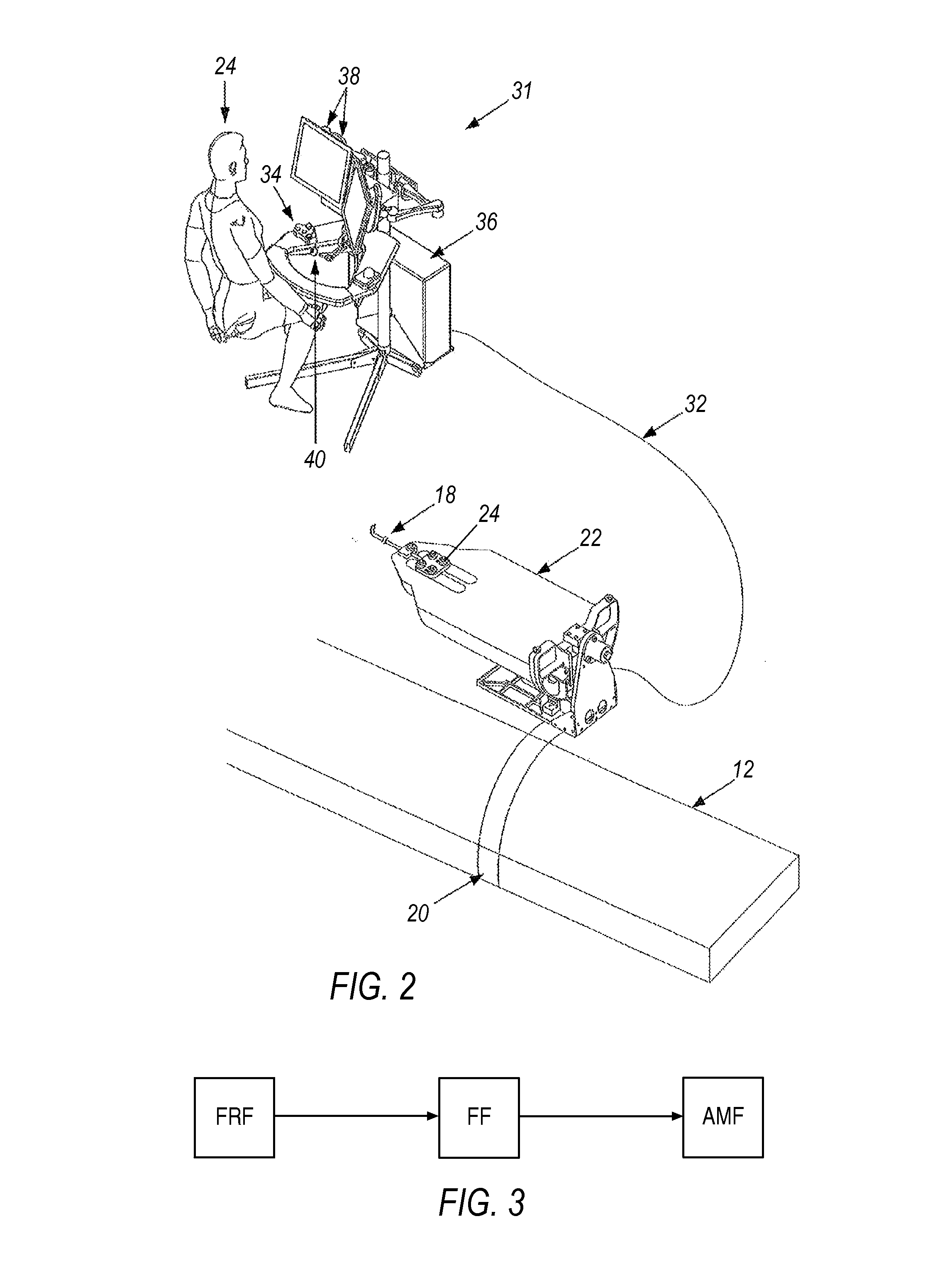Reducing incremental measurement sensor error
a technology of incremental measurement and sensor error, which is applied in the field of minimally invasive procedures, can solve the problems of unanticipated or unmodeled constraints imposed by the patient's anatomy, the parameters of the tool do not meet the ideal/anticipated parameters, and the catheter's motion does not match the actual motion of the catheter, etc., and achieves the effect of reducing measurement error
- Summary
- Abstract
- Description
- Claims
- Application Information
AI Technical Summary
Benefits of technology
Problems solved by technology
Method used
Image
Examples
Embodiment Construction
[0024]Exemplary approaches described herein provide full or partial registration along the length of a sensor to reduce the influence of measurement error. As will be described further below, an exemplary registration process generally relates a reference frame of a sensor to another reference frame of interest. Alternatively or in addition to examples employing full or partial registration along the length of a sensor, applying heavier filtering at the proximal end of the sensor can provide a more stable base for distal measurements reducing the influence of measurement errors. While these exemplary approaches are discussed in the context of a Fiber Optic Shape Sensing and Localization (FOSSL) system, other visualization methodologies may be employed. Fiber optic shape sensing is a technology that can sense the shape of a flexible body such as a catheter during a surgical procedure to permit visualization of the catheter in the patient's anatomy.
[0025]One exemplary methodology prov...
PUM
 Login to View More
Login to View More Abstract
Description
Claims
Application Information
 Login to View More
Login to View More - R&D
- Intellectual Property
- Life Sciences
- Materials
- Tech Scout
- Unparalleled Data Quality
- Higher Quality Content
- 60% Fewer Hallucinations
Browse by: Latest US Patents, China's latest patents, Technical Efficacy Thesaurus, Application Domain, Technology Topic, Popular Technical Reports.
© 2025 PatSnap. All rights reserved.Legal|Privacy policy|Modern Slavery Act Transparency Statement|Sitemap|About US| Contact US: help@patsnap.com



